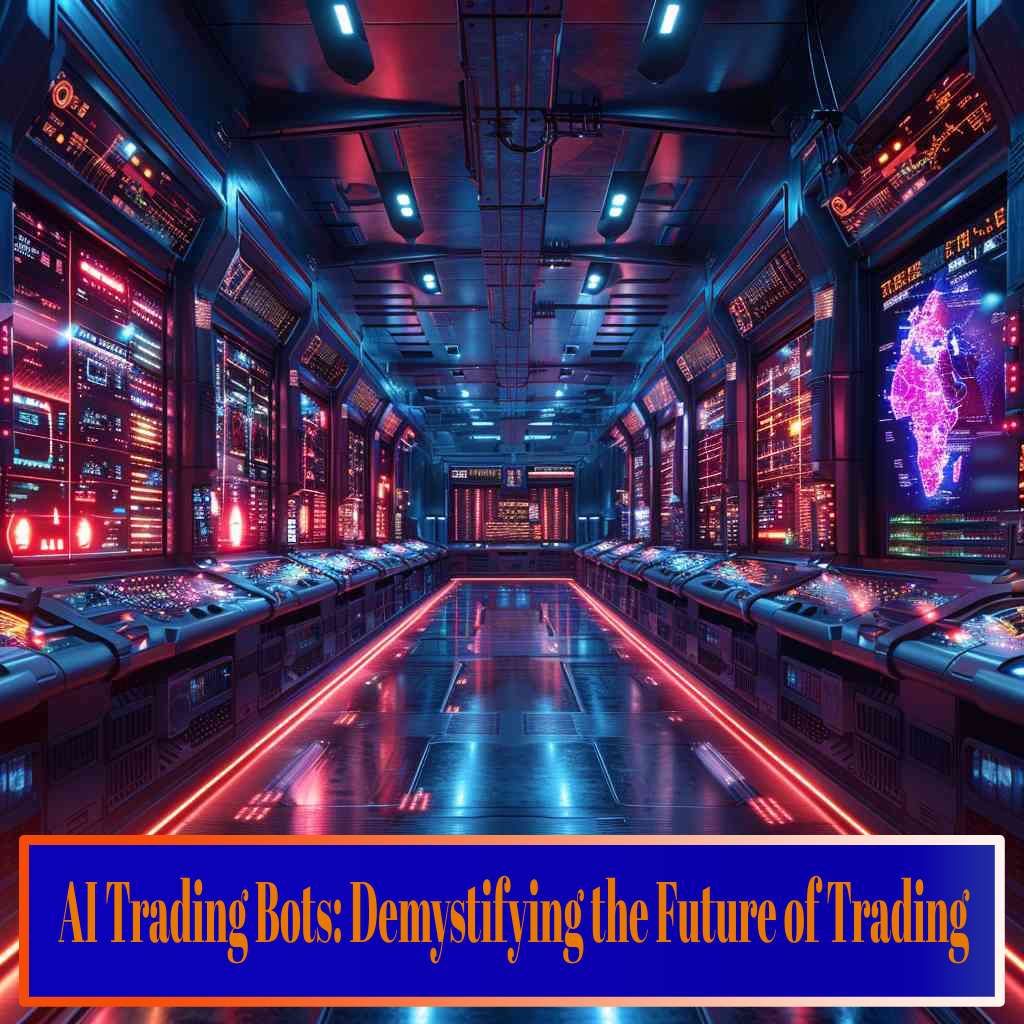
AI Trading Bots: Demystifying the Future of Trading
Contents
How do AI Trading Bots Make Decisions?
The world of finance is no stranger to algorithmic trading. From algorithmic trading systems used by large institutions to retail investors setting stop-loss orders, technology has long played a role in market activity. However, the rise of artificial intelligence (AI) is bringing a new level of sophistication to trading. AI Trading Bots, powered by complex algorithms and machine learning, are changing the way investors interact with the markets.
The Power of Data: Fueling AI with Market Information
At the heart of every AI trading bot lies data – and lots of it. These bots are voracious consumers of information, ingesting massive datasets that include historical price movements, trading volume, economic indicators, news sentiment, and even social media trends. This constant flow of data provides the raw material for AI bots to analyze and interpret market conditions.
Machine Learning: Training Bots to Recognize Patterns and Trends
AI trading bots don’t simply crunch numbers; they learn from them. Utilizing machine learning techniques, these bots can identify patterns and trends within vast datasets that would be nearly impossible for humans to spot. By recognizing recurring sequences and correlations, AI bots develop a sophisticated understanding of market behavior. This learning process is continuous, with bots constantly refining their models as new data becomes available. They adapt to changing market conditions and adjust their strategies accordingly.
From Analysis to Action: Executing Trades Based on AI Insights
The true power of AI trading bots lies in their ability to translate analysis into action. Once a bot identifies a potentially profitable trading opportunity based on its data analysis and machine learning models, it can execute trades automatically. This removes the emotional component from trading, as bots strictly adhere to their programmed logic, eliminating the potential for impulsive decisions driven by fear or greed.

What Trading Strategies Do AI Bots Employ?
Trading bots are incredibly versatile and capable of employing a wide range of trading strategies to capitalize on market opportunities. While the specific strategies used can vary depending on the bot’s programming and the goals of the user, some common approaches include trend following, arbitrage, and mean reversion.
Trend Following: Riding the Waves of Market Momentum
Trend-following bots are designed to identify and capitalize on established market trends. By analyzing price movements and trading volume, these bots can determine the direction of prevailing trends and execute trades accordingly. Essentially, they aim to “ride the wave” of market momentum, buying assets that show sustained upward price movement and selling those in decline.
Arbitrage: Exploiting Price Discrepancies for Profit
Arbitrage bots specialize in identifying and exploiting price discrepancies for the same asset across different exchanges. These discrepancies, often fleeting and minuscule, can be difficult for humans to spot and capitalize on. However, arbitrage bots are designed to detect these price inconsistencies with lightning speed and execute trades to profit from the difference.
Mean Reversion: Capitalizing on Price Corrections
Mean reversion strategies are based on the idea that asset prices tend to fluctuate around an average price over time. Bots using this approach aim to identify assets that have deviated significantly from their historical average price. They then take positions based on the expectation that the price will eventually revert to its mean.
What are the Benefits and Risks of Using AI Trading Bots?
The use of AI trading bots offers a compelling mix of advantages and potential drawbacks. As with any sophisticated financial tool, understanding both sides of the equation is essential for responsible and informed decision-making.
Advantages: Speed, Efficiency, and Emotionless Trading

One of the primary advantages of AI trading bots is their sheer speed and efficiency. These bots can analyze vast amounts of data and execute trades in fractions of a second, far exceeding human capabilities. This speed is particularly crucial in fast-moving markets, where opportunities can appear and disappear in the blink of an eye. Additionally, AI bots remove the emotional element from trading, adhering strictly to their programmed logic and avoiding impulsive decisions driven by fear or greed.
Potential Drawbacks: Market Volatility, Technical Glitches, and Over-Optimization
Despite their advantages, AI trading bots are not without risks. Market volatility remains a significant concern, as rapid price swings can lead to unexpected losses, even for sophisticated bots. Technical glitches, while rare, can also be problematic, potentially resulting in erroneous trades or missed opportunities if not addressed promptly. Over-optimization is another potential pitfall, where bots are trained on historical data to the point that they struggle to adapt to new market conditions.
Given the inherent risks associated with AI trading bots, employing these tools responsibly is paramount. Thoroughly researching and understanding the capabilities and limitations of any bot before deployment is crucial. Diversifying trading strategies and avoiding over-reliance on a single bot can help mitigate risk. Regularly monitoring bot performance and making adjustments as needed is essential, as market conditions can change quickly. Finally, maintaining realistic expectations is key, as even the most sophisticated AI bots cannot guarantee profits and do not eliminate the inherent risks associated with financial markets.



